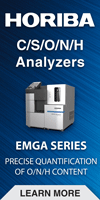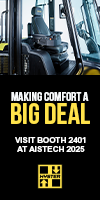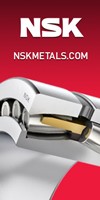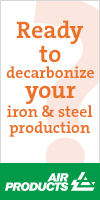Nippon Steel Adopts HSS Plate for Container Ship Applications
12/13/2007 - Nippon Steel has adopted plate made from its YP47kg steel -- a high strength steel with high fracture toughness -- for application on 10 large container ships being built by Hyundai Heavy Industries or Kawasaki Kisen Kaisha.
Nippon Steel has adopted plate made from its YP47kg steel—a high strength steel with high fracture toughness —for application on large container ships. This marks the first case of YP47kg-steel being used for ship construction by an overseas shipbuilder.
Nippon Steel is supplying YP47kg steel plates for an order from Kawasaki Kisen Kaisha, Ltd., for 10 ships that will be built by Hyundai Heavy Industries, Korea, which is the largest shipbuilder in Korea. The ships will carry 4,500 containers each.
YP47kg-steel, which has a yield strength of 47 kgf/mm2, combines crack-arrestability* (fracture toughness, or the ability to arrest cracking) with strength. Nippon Steel worked with Mitsubishi Heavy Industries, Ltd. to develop this grade for the large-sized plate needed for container ship applications. By using high-arrestability-type steel plate for the hatch-side coaming and the upper deck—the most important parts for a ship's structural strength— cracking can be arrested in the parts, even in the event of brittle fractures occurring in the hull, thus securing even higher levels of structural integrity and safety.
This high strength steel plate also provides potential opportunities for down-gauging and down-weighting, which would result in improved fuel economy. This steel plate also makes it possible for a container ship to be loaded with a greater number of containers.
Previous uses of YP47kg-steel have included its application for a series of six large container ships, carrying 8100 containers each, which are being built at the Nagasaki Shipyard and Machinery Works of Mitsubishi Heavy Industries. MOL CREATION, the first of the six-vessel series, went into service in June of this year. YP47kg-steel has also been used for about 30 container ships within Japan and abroad, including this large order from Hyundai.
In preparation for meeting growing demand (mainly in the shipbuilding and energy fields), Nippon Steel has been investing in the plate mill at its Oita Works, and has also been implementing measures for expanding capacity for high-grade steel plates. Nippon Steel’s investments have made this order from Hyundai a timely one. With its advanced technology and process capabilities, the company now intends to aggressively work toward increasing demand for high-grade steel plates.
*Nippon Steel defines “crack-arrestability” as the ability of a material to arrest cracking. Once cracking occurs, it propagates at a rate of about 1,000 meters/second, instantly causing a structural failure in some cases. Structural integrity is enhanced by the use of steel plate that has high crack-arrestability.
** According to Nippon Steel, the “hatch-side coaming and the upper deck” are the most important (structural) parts, as they are subjected to enormous forces. For the Hyundai order, YP47kg-steel is used for the hatch-side coaming and YP40kg steel is used for the upper deck because of their high crack-arrestability. YP47kg-steel has successfully become practical for the first time in the world by joint efforts of Mitsubishi Heavy Industries and Nippon Steel. As in the case of MOL CREATION, the high-arrestability-type YP40kg-steel is also now available from (only) Nippon Steel.
Previous uses of YP47kg-steel have included its application for a series of six large container ships, carrying 8100 containers each, which are being built at the Nagasaki Shipyard and Machinery Works of Mitsubishi Heavy Industries. MOL CREATION, the first of the six-vessel series, went into service in June of this year. YP47kg-steel has also been used for about 30 container ships within Japan and abroad, including this large order from Hyundai.
In preparation for meeting growing demand (mainly in the shipbuilding and energy fields), Nippon Steel has been investing in the plate mill at its Oita Works, and has also been implementing measures for expanding capacity for high-grade steel plates. Nippon Steel’s investments have made this order from Hyundai a timely one. With its advanced technology and process capabilities, the company now intends to aggressively work toward increasing demand for high-grade steel plates.
*Nippon Steel defines “crack-arrestability” as the ability of a material to arrest cracking. Once cracking occurs, it propagates at a rate of about 1,000 meters/second, instantly causing a structural failure in some cases. Structural integrity is enhanced by the use of steel plate that has high crack-arrestability.
** According to Nippon Steel, the “hatch-side coaming and the upper deck” are the most important (structural) parts, as they are subjected to enormous forces. For the Hyundai order, YP47kg-steel is used for the hatch-side coaming and YP40kg steel is used for the upper deck because of their high crack-arrestability. YP47kg-steel has successfully become practical for the first time in the world by joint efforts of Mitsubishi Heavy Industries and Nippon Steel. As in the case of MOL CREATION, the high-arrestability-type YP40kg-steel is also now available from (only) Nippon Steel.


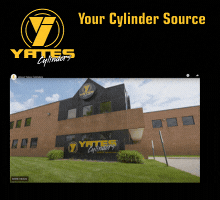
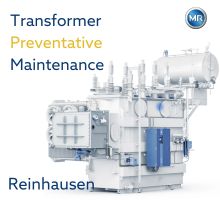-(220-x-200-px)-(130-x-130-px)-(220-x-200-px).jpg?lang=en-US&ext=.jpg)
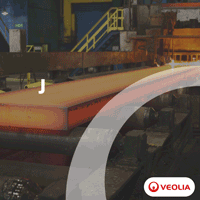.gif?width=200&height=200&mediaprotectionhash=ddb07947ad3b4ab959a83714461eccd5c6895f370695eb035a9ff7aa736f8ad9&ext=.gif)
